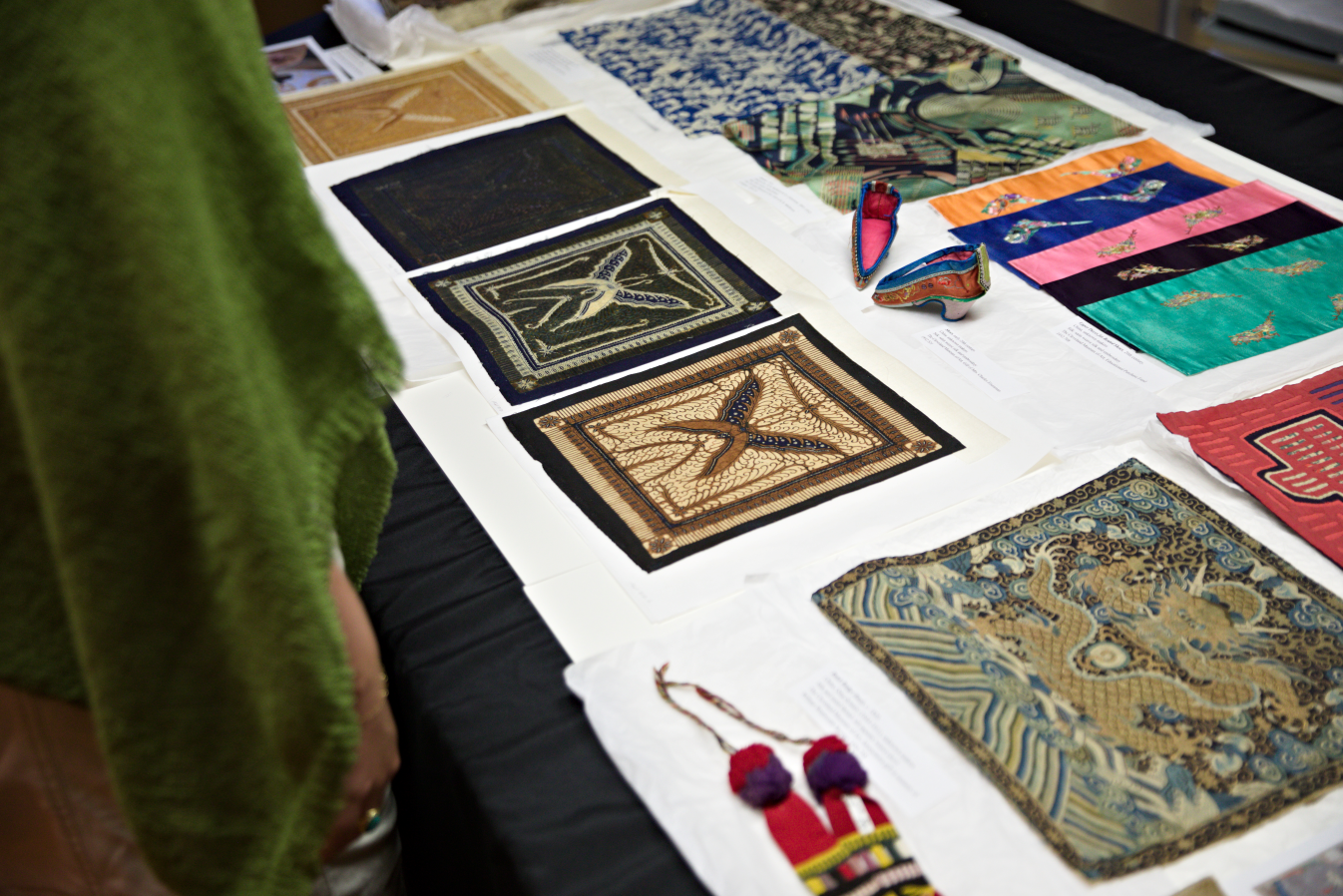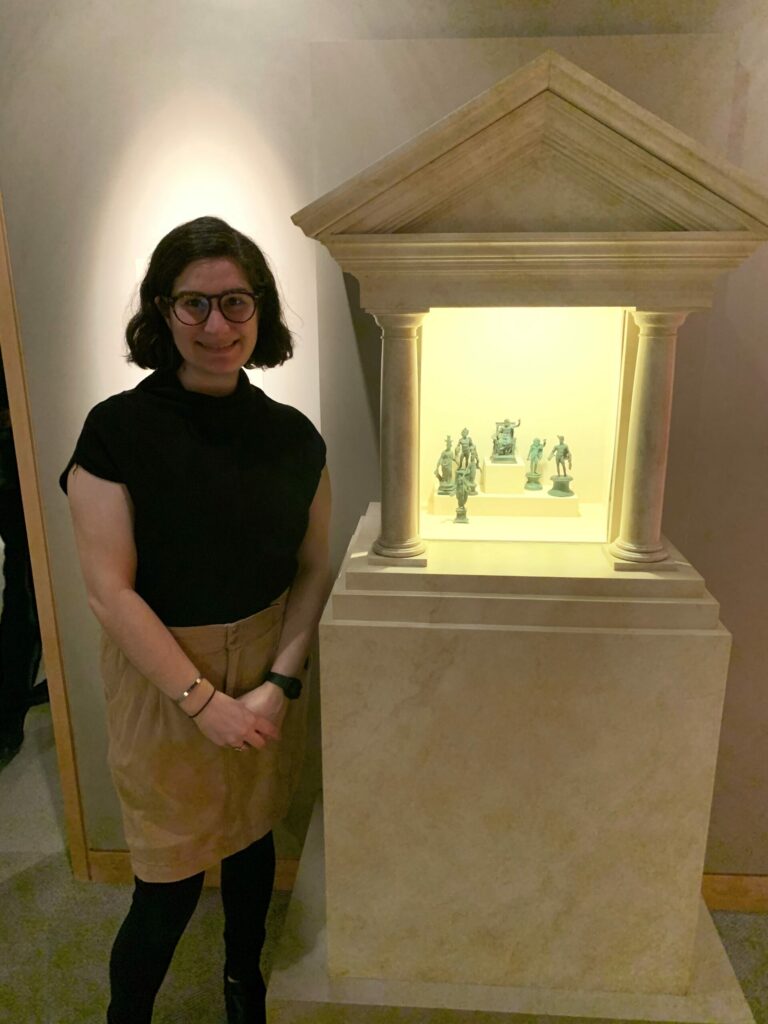Uncategorized
Congratulations to PhD student Luke Hester and TWDC’s Programming and Marketing Manager Rebekah Utian (CWRU Art History MA ‘24) who co-organized a Pop-Up Museum, “Storied Threads: Natural Fibers from Past to Present,” hosted by the Tremont West Development Corporation as part of its Arts in August series. The Pop-Up...
Just two more weeks to see Prof. Elina Gertsman’s and Dr. Gerhard Lutz’s Creation, Birth, and Rebirth show, which was a central feature in this issue of art/sci magazine, and was reviewed in the print version of Plain Dealer and on cleveland.com. The feature highlights the collaboration between the program and the museum, as well as the role of graduate students in the making of the show and writing its didactics. The magazine, in its new online format, further links to the December interview with Prof. Maggie Popkin about the NEH Public Scholars award given in support of her new book on souvenirs, and announces international symposia convened by Prof. Elizabeth Bolman and Reed O’Mara.
Congratulations to Sam Truman, PhD candidate in medieval art, who recently presented her paper “‘Straunge Sights’: The Representation and Reception of Samuel’s Ghost in the Early Modern Period” at the Ghosts in Britain and Ireland, 1500-1950 conference held at Mary Immaculate College in Limerick, Ireland. The paper considered how the reception of an image of the Raising of Samuel found in a manuscript of John Lydgate’s Fall of Princes (British Library, Harley MS 1766) changed in the wake of the Protestant Reformation.
Sam is also co-organizing and co-chairing two panels at the 2025 International Medieval Congress, which will be held in Leeds, England July 7-10. These panels, “The Living Dead and the Transmission of Otherworldly Knowledge in Medieval Texts and Images I & II,” will feature a paper by recent department graduate Angie Verduci!
2026 International Congress on Medieval Studies
May 14 – 16, 2026 | Kalamazoo, MI
Organizers: Elina Gertsman (Case Western Reserve) and Nikki DeLuca (University of Vermont)
Cherubim of the Ark, Nicanor’s Gates, the Grail, the reliquary of Sainte Foy: metal objects, real and imaginary, imbued with magic or channeling the miraculous, haunt the long history of medieval art. This session seeks to inquire into material significance of metals, and we invite papers that explore a broad array of themes knotted around their physical and allegorical properties. Topics may include but are not limited to semiotics of metal artefacts; metaphysics of metals; metal’s material relationship with other substances, such as earth or stone; metal visualized in other media; metals and alchemy; metals and cosmology; metals and the supernatural; and metals in prophetic and eschatological discourses. Interdisciplinary approaches are welcome, but the heart of the session lies in its focus on the visual universe of metals manifested as objects: extant, described, or evoked.
Submit your abstract by September 15 here!
The multi-year international joint project, Abstraction Before the Age of Abstract Art, spearheaded by Prof. Elina Gertsman and Prof. Vincent Debiais (École des hautes études en sciences sociales | EHESS), saw its latest event in Paris with the lecture delivered by Prof. Gertsman on abstraction in medieval Sephardic haggadot. The project, which began with the support of the French-American Cultural Exchange Foundation grant, and was picked up last year as part of the collaborative series at the Institut national d’histoire de l’art, took graduate students to both sides of the Atlantic to attend and participate in workshops and symposia in Cleveland and Paris, as well as in the conferences co-organized by Gertsman and Debiais at Princeton University and EHESS.
Tracing Jewish Histories blog post is now live! In addition to a detailed description of the Courtauld conference, it contains a link to recordings of both days of talks. Read it here! Once again, congratulations to Reed on organizing this fantastic endeavor and to Sam, Claudia, Sarah, Tess, Darren, and Alli for chairing and moderating!
The Department is delighted to celebrate the accomplishments of Prof. Erin Benay, Director of Undergraduate Studies and Distinguished Scholar in the Public Humanities--her work was profiled in a full feature in the Spring issue of THINK Magazine, CWRU's flagship publication. Click here to view the feature. Pressing Matters, a...
This course will explore developments in medieval Japanese art, starting with the rise of cloistered imperial rule in the eleventh century and ending in the sixteenth century with the violent upheaval of the Sengoku era. From the expressive formations of wood sculpture, to the flowing brushwork of ink painting, and the crackling surfaces of tea ware, students will consider how visual culture embodied this dynamic period in Japanese history. We will begin with an introduction to major historical and cultural movements in Japan’s middle ages, considering the impact of art across social strata. Subsequent class sessions will delve into central themes that shape contemporary understandings of medieval art, including intercultural exchange, materiality and the natural world, and intersections of healing and image-making practices.
The Department of Art History and Art at Case Western Reserve University (CWRU) invites current and recent graduate students in art history and related disciplines to submit paper abstracts for the 2025 Annual Cleveland Symposium, Love and Desire in the Visual Arts, July 21, 2025. Held in partnership with the Cleveland Museum of Art as part of the joint program between CWRU and CMA, the Cleveland Symposium is one of the longest-running annual art history symposia in the United States organized by graduate students. This year’s symposium welcomes innovative research papers that explore themes of love and desire as manifested in any medium as well as in any historical period and geographic location. Please click below for more information!
Scholars and curators of medieval and early modern Jewish art, museology, and provenance convened in London two weeks ago to participate in the international two-day symposium Tracing Jewish Histories: The Long Lives of Medieval Hebrew Manuscripts, Judaica, and Architecture. The symposium took place in London at The Courtauld Institute of Art and was co-organized by Reed O’Mara (Mellon Fellow and PhD candidate at CWRU) and Laura Feigen (PhD candidate at The Courtauld). As a part of the program, speakers were invited to handle Judaica from the collection of the Victoria & Albert Museum with V&A curator Alice Minter. The symposium covered a wide array of subjects, from synagogue architecture to manuscript illumination to the curation and collecting of Judaica, uncovering the complex histories of studying historic Jewish objects and spaces. CWRU and Courtauld graduate students took on roles as chairs and moderators for sessions, and Professor Elina Gertsman served as the primary advisor to Reed and Laura throughout the course of their symposium planning. The symposium was sponsored by the Department of Art History and Art at CWRU, Sam Fogg, the Mellon Foundation, and The Medieval Academy of America Graduate Student Committee Grant for Innovation in Community Building and Professionalization. A recording of the symposium will go live on The Courtauld’s website in the next week!
The department is delighted to announce the publication of Scent and Sense in Medieval Material Culture, edited by Prof. Elina Gertsman. This collection of essays explores images and objects that take smells as their predicates, directing the inquiry on their tropological and often paradoxical meanings, and on their place in the medieval economy of remembrance and reflection. The volume, a guest-edited issue of Convivium, gathers essays drawing from several religious cultures of the global medieval world—Buddhist, Jewish, Christian (both western and eastern), Islamic—and offers a broad temporal span of several centuries. Among the featured authors are Sonya Rhie Mace, the George P. Bickford Curator of Indian and Southeast Asian Art at the CMA, and Reed O’Mara, the department’s Mellon Fellow and doctoral student in medieval art.
Congratulations to doctoral candidate Arielle Suskin, who has been awarded a Research Grant from the Decorative Arts Trust. The grant will support her summer research to travel to multiple U.S. museums as part of her dissertation research, which explores the social meanings of Roman bronze figural balsamaria, an ancient vessel...












